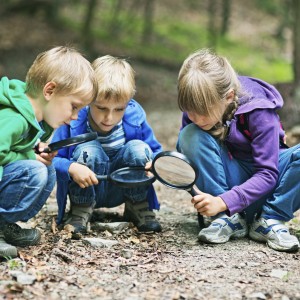Last week in class, we discussed the sad decline in the amount of time that children spend outdoors these days (compared to our parents, whose parents were probably shaking their heads at the amount of time THEY spent indoors too). So after all the statistics were presented and possible implications on our health and learning and other depressing trends were discussed, I asked myself, how can we make a change in the generation(s) to come? (Disclaimer: This is purely a reflective post and some ideas, not so much solid suggestions on what we should do)
I think, first and foremost, we can definitely make a change in the way we choose to bring up our children (should we have any, that is). But as future educators and/or policy makers (which I think some of us might become), there is surely more we can do. I asked Dr Coleman about incorporating outdoor time into the curriculum or just into education schemes, and she shared with me some interesting initiatives that are already being conducted in Canada, which I then went to look up (the document is pretty long though). What I found is that most of these outdoor classrooms target children at the preschool/kindergarten age, which makes sense because it’s probably easier to form bonds with nature and to maximise learning through nature at a younger age. But I wondered if it is possible to incorporate the idea of an outdoor classroom into slightly higher levels of education, such as secondary schools.
Currently, we already have outdoor camps such as the ever-popular Outward Bound Singapore (or other nearby countries). However, those are mainly targeted at student leaders, or act on a “sign up” basis, which naturally targets students who are already more inclined to spend their time outdoors. However, what these education programs in Canada (and actually in many other countries such as Australia and New Zealand) are advocating is “regular and repeated access to the same natural space”, and allowing learning to take place in that context. Would this be practical/applicable in Singapore? I think there are a few things we have to consider:
- At the secondary school level, where much content has to be covered in time for the national exams, what content can we (effectively) teach outdoors? While some concepts such as the carbon/hydrological cycle, food webs, various topics in physical geography etc. spring to mind, other subjects might not be as straightforward. If we select appropriate sites for the appropriate subject (eg. Fort Canning park to teach History/Social Studies?), perhaps that might aid matters. But would regular use of the same outdoor classroom facilitate the teaching/learning of different concepts?
- What types of green spaces would we want to use? In several of the bigger countries, where there is more access to slightly less “manicured” natural habitats, it might be more beneficial to expose children to such habitats and cultivate their love for the environment there. However, in Singapore, already we seem to have an issue of people preferring urban parks to secondary forests of higher conservation value (which we discussed in class a couple of weeks back). Would it then make sense to conduct outdoor lessons regularly in these areas? (granted, the health benefits of spending time outdoors still remain, and there will still be more exposure to flora and fauna than in a traditional classroom).
- Linked to point #2, would the use of outdoor classrooms be sustainable? Will consistent trampling/tearing/etc. by curious hands be damaging to the green space? If ground rules are set and adhered to, maybe not, but it does pose a challenge to trying to conduct any activities in habitats of more conservation value.
- Safety. This is likely the biggest barrier to the feasibility of the whole idea, particularly since class sizes tend to be rather large in secondary schools, and teachers are responsible for the well-being and safety of their students. Would parents be open to the idea of allowing their children to take risks and get wet and dirty while not under their direct supervision?
This is all largely speculative, but it did bring to mind the reading we discussed in another module that I’m taking, which is basically about re-educating our educators and administrators, so that they, in turn, can educate future generations of environmentally aware and concerned innovators, who will then be invested in solving or alleviating environmental issues. I think the role of educators and administrators is such an important one, and perhaps they, too, need to evaluate how important nature and green spaces are to them, before trying to bring that love to the students.
Because ultimately, global issues of climate change, overexploitation, and other big things are perhaps too large for most people to really feel; sometimes, it just boils down to how much you value that tree or that nest of birds in the park right next to your house.
